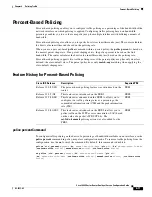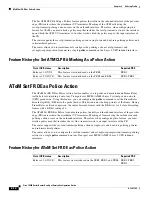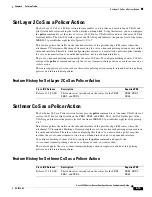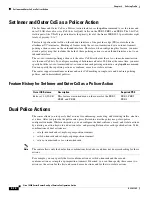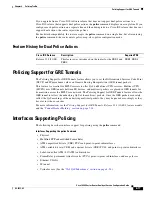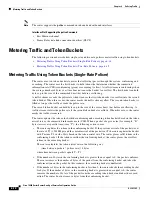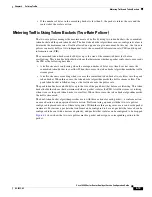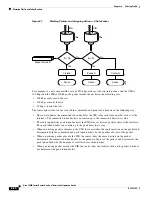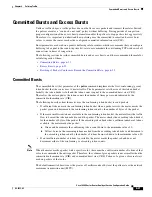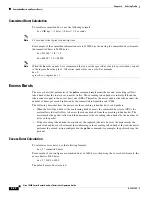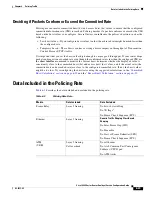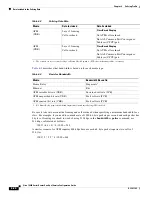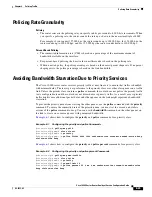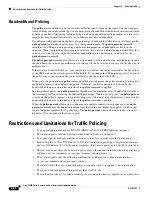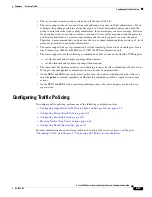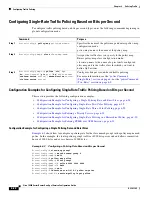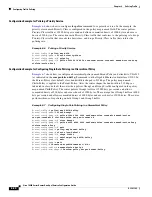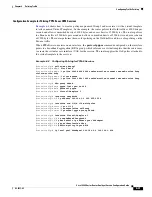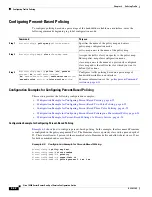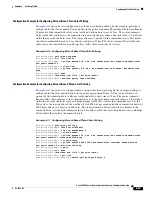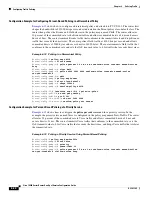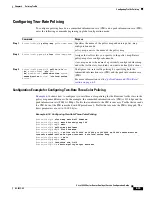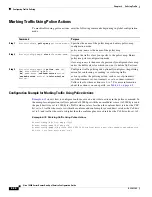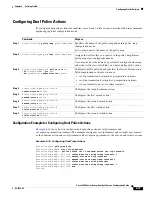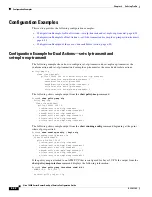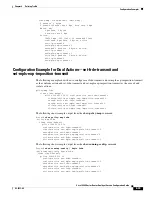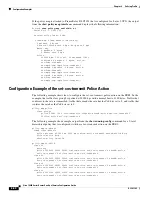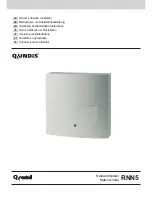
6-25
Cisco 10000 Series Router Quality of Service Configuration Guide
OL-7433-09
Chapter 6 Policing Traffic
Policing Rate Granularity
Policing Rate Granularity
Policing
•
The router converts the policing rate you specify in bits per second to 8,000-byte increments. When
you specify a policing rate, the router rounds the rate up or down to the nearest multiple of 8000.
For example, if you request 127,000 bps, the router rounds up to 128,000 bps; for 124,000 bps, the
router rounds up to 128,000 bps; and for 123,999 bps the router rounds down to 120,000 bps.
Percent-Based Policing
•
The committed information rate (CIR) is based on a percentage of the maximum amount of
bandwidth available on the interface.
•
For percent-based policing, the burst value in milliseconds is based on the policing rate.
•
Within a nested policy, the police percentage is based on the nearest parent shape rate. If no parent
shaping exists, the police percentage is based on the link bandwidth.
Avoiding Bandwidth Starvation Due to Priority Services
The Cisco 10000 series router services priority traffic at near line rate to ensure that traffic is handled
with minimal delay. The router gives preference to the priority class over other class queues on a traffic
link. Unless the priority class contains a
police
command, the router does not police the priority traffic
to its configured rate and the router does not discard excess priority traffic. As a result, excess priority
traffic might cause additional packet delay and other queues on the link might experience bandwidth
starvation.
To prevent the priority queue from starving the other queues, use the
police
command with the
priority
command. To ensure the committed rate of the priority queue, you must set the exceed and violate
actions of the
police
command to drop. You can use the
bandwidth
command on the other queues on
the link to create one or more queues with guaranteed bandwidth.
Example 6-1
shows how to configure the
priority
and
police
commands for a priority class:
Example 6-1
Configuring the priority and police Commands
Router(config)#
policy-map gold
Router(config-pmap)#
class class1
Router(config-pmap-c)#
priority
Router(config-pmap-c)#
police 512000 8000 1000 conform-action transmit exceed-action drop
violate-action drop
Example 6-2
shows how to configure the
priority
and
police percent
commands for a priority class:
Example 6-2
Configuring the priority and police percent Commands
Router(config)#
policy-map new-traffic
Router(config-pmap)#
class voice
Router(config-pmap-c)#
priority
Router(config-pmap-c)#
queue-limit 32
Router(config-pmap-c)#
police percent 25 2 ms 2 ms conform-action transmit exceed-action
drop violate-action drop

